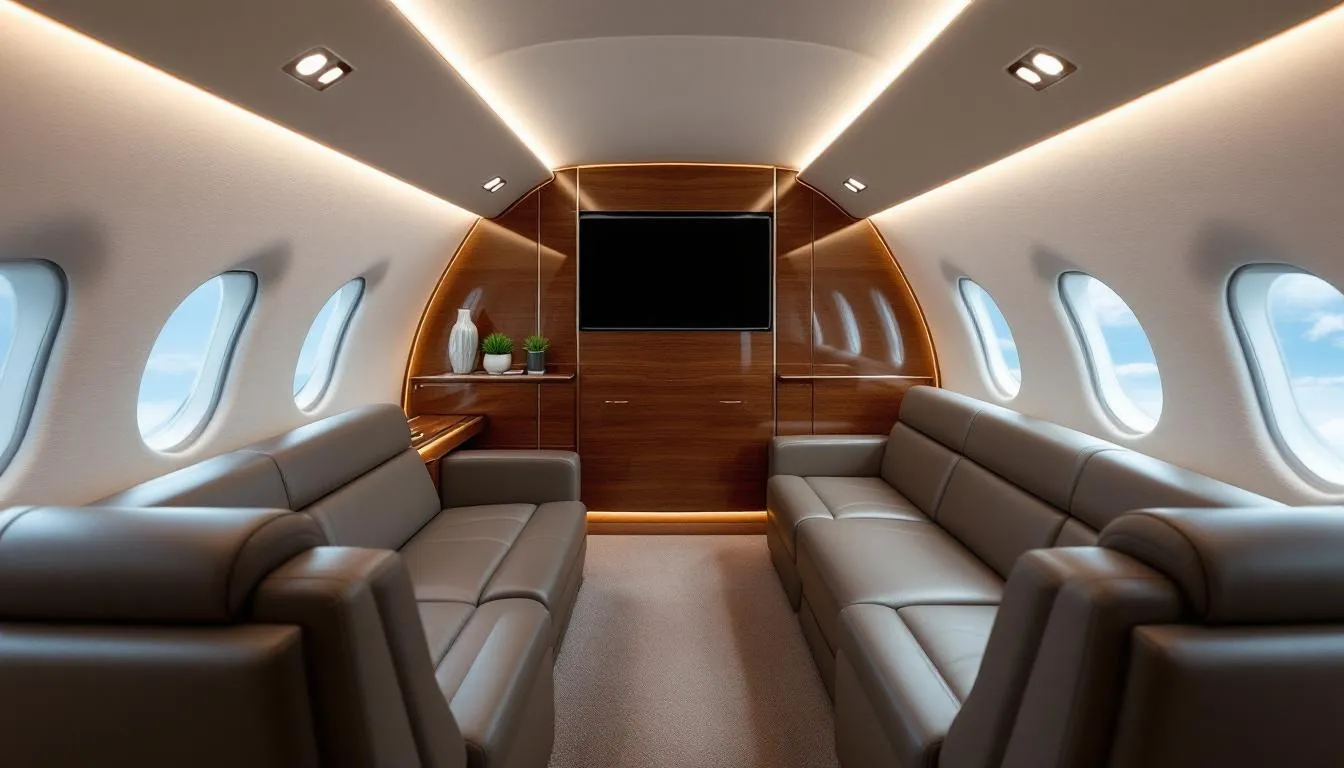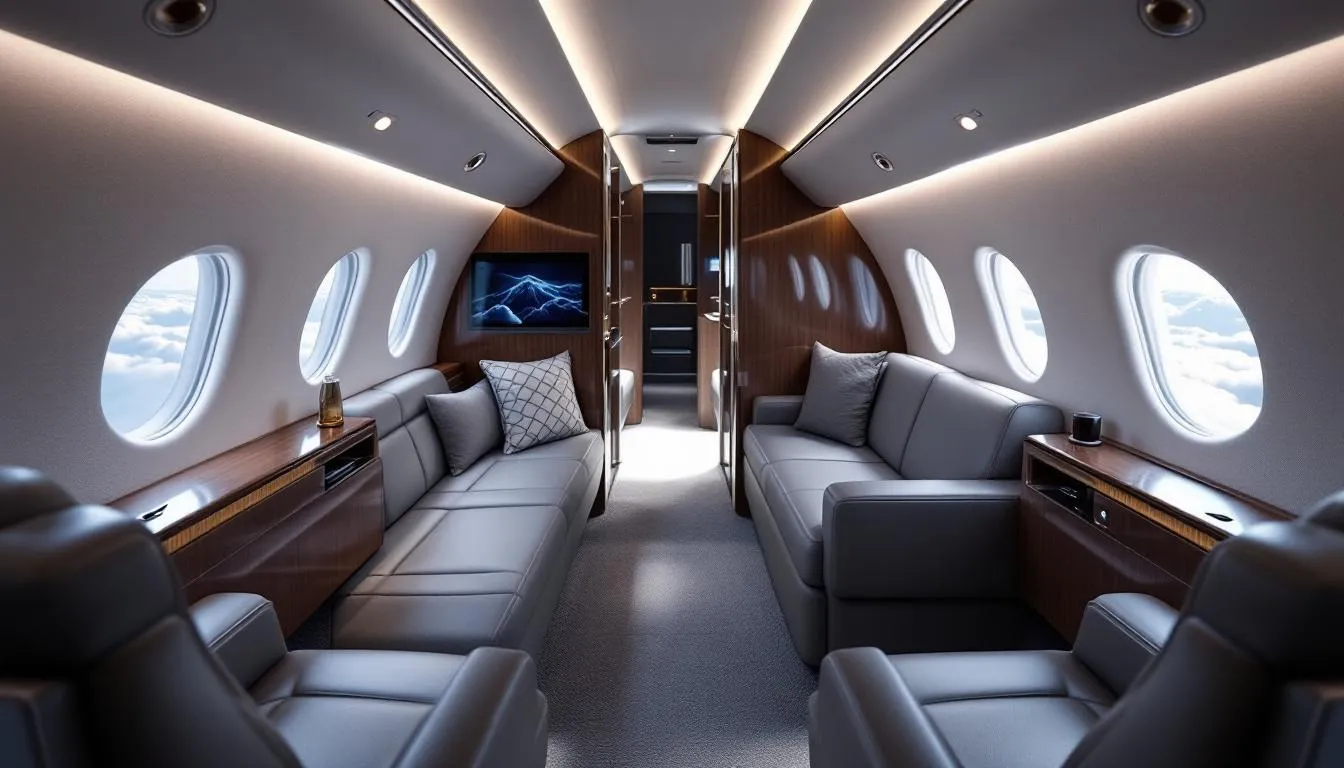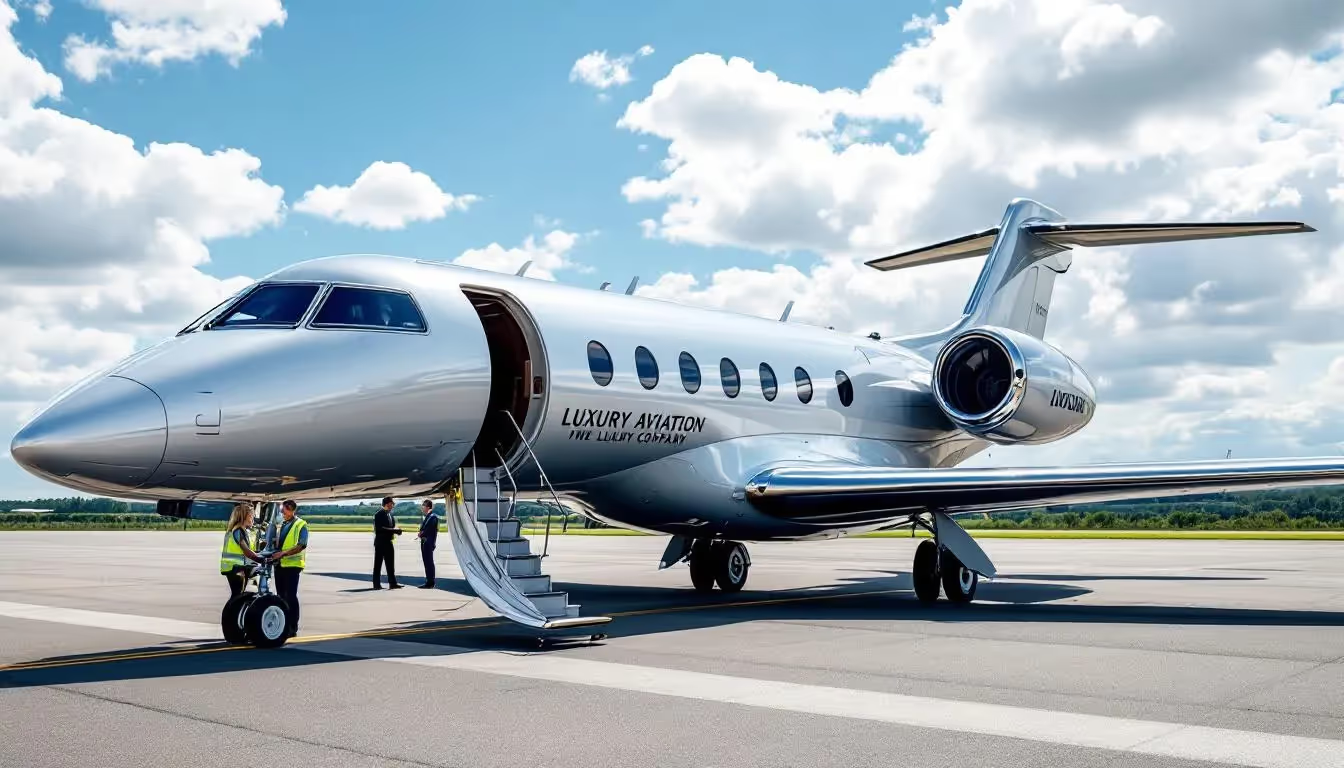Private aviation represents the pinnacle of comfort, flexibility, and efficiency in modern travel. Private aircraft are the vehicles that make this possible, offering a range of options for on-demand booking, membership programs, and tailored travel experiences. For business leaders, entrepreneurs, and high-net-worth individuals, the ability to skip long security lines, fly directly to smaller airports, and customize each journey has transformed how travel is experienced. Yet, while full private jet ownership remains an exclusive option, fractional jet ownership and jet sharing programs have made private aviation more accessible than ever.
Unlike whole aircraft ownership, which requires millions in capital, ongoing maintenance costs, and staffing responsibilities, fractional programs allow multiple individuals or entities to share ownership of a single aircraft. The concept of fractional ownership is based on the idea that many private jet owners utilize their aircraft for only a limited number of hours each year. This approach dramatically reduces costs while maintaining access to the same level of service, safety, and convenience.
As the private aviation industry continues to grow, companies now offer a wide range of options, from fractional ownership and jet card programs to on-demand charter services, tailored to varying levels of travel frequency and budget.
For discerning travelers seeking the best jet sharing program, understanding how fractional ownership works and what makes it a cost-effective solution is key.
What Is a Fractional Ownership Program?
A fractional ownership program enables multiple owners to purchase shares in a specific aircraft or a fleet managed by a private aviation company. Each owner is entitled to a set number of flight hours per year, proportional to their ownership share. The management company handles all logistics, including maintenance and crew scheduling. These shares are known as fractional shares, which allow travelers to buy a portion of an aircraft and access defined flight hours, making private jet use more accessible and financially flexible compared to full ownership. Fractional jet ownership typically requires buying a portion of an airplane and paying appropriate trip fees. Additionally, each fractional owner retains an undivided interest in the aircraft, which can provide potential tax benefits.
For example, a one-eighth (⅛) share in an aircraft is a type of fractional share and typically provides about 100 flight hours annually. In contrast, whole ownership means owning the entire aircraft, offering exclusive use, guaranteed access, and full control, but at a significantly higher cost. That’s more than enough for most business executives or families who fly regionally or domestically several times a month.
What makes this model appealing is how it balances ownership benefits, like guaranteed availability and premium service, with cost efficiency. You’re not paying for idle aircraft time, hangar storage, or pilot salaries when you’re not flying.
Most fractional programs include comprehensive management services such as:
Aircraft maintenance and inspections
Pilot recruitment and training
Scheduling and dispatch coordination
Insurance and operational compliance
This allows owners to enjoy the perks of private aviation without the day-to-day logistics of managing an aircraft.
Key Benefits of Fractional Ownership
Fractional jet ownership is more than a financial alternative; it’s a strategic lifestyle decision. Below are the main advantages that make it an increasingly popular choice. However, it's important to consider aircraft choice, as some programs may have limitations on the types of aircraft available for selection.
1. Significant Cost Savings
Owning a fraction of an aircraft means you pay only for the hours you fly. The initial investment and ongoing costs, such as maintenance, insurance, and pilot salaries, are distributed among all owners. Initial and ongoing costs for fractional ownership remain substantial, even though they are lower than full ownership. Potential owners must consider ongoing management and maintenance fees, which can be significant even when shared among owners. Compared to full ownership, this can save millions annually, especially for those flying 50–200 hours per year.
2. Guaranteed Access to Aircraft
Fractional owners enjoy priority scheduling and guaranteed availability. Even during peak travel times, most programs guarantee access to a comparable aircraft within a defined notice period, often as little as 4 to 6 hours.
3. Predictable Costs
Programs typically charge three main fees:
Acquisition cost (share purchase)
Monthly management fee
Occupied hourly rate. Fractional ownership programs typically encompass fixed costs, such as monthly shared expenses, which cover pilot salaries, insurance, and hangar costs.
This structure provides transparency and predictability, ideal for business budgeting and personal financial planning.
4. Flexibility and Fleet Access
Owners aren’t limited to one plane. Many programs allow fleet interchange, meaning you can choose an aircraft that fits each trip, such as a light jet for short regional hops or a super-midsize jet for cross-country or international flights.
5. Professional Management
Reputable fractional providers handle everything, from hiring and training pilots to managing hangar space and regulatory compliance, so owners can simply arrive and fly.
6. Tax Advantages
Depending on your usage and structure, fractional ownership can offer potential tax benefits, such as depreciation or business expense deductions. Consulting a tax professional ensures you maximize these advantages legally and efficiently.
Aircraft Types and Fleet Options
The type of aircraft you choose significantly influences both your experience and your expenses. Fractional ownership programs often include access to a diverse fleet to accommodate various travel profiles:
Aircraft Categories and Their Uses
Light Jet
Typical Range: 1,200–1,800 miles
Passenger Capacity: 4–6 passengers
Ideal For: Regional business trips or short leisure flights
Midsize Jet
Typical Range: 2,000–2,800 miles
Passenger Capacity: 6–8 passengers
Ideal For: Cross-country travel with moderate luggage
Super Midsize Jet
Typical Range: 3,000–3,500 miles
Passenger Capacity: 8–10 passengers
Ideal For: Transcontinental routes and executive teams
Large Cabin Jet
Typical Range: 4,000–7,000 miles
Passenger Capacity: 10–16 passengers
Ideal For: Long-haul international travel and group trips
Ultra Long-Range Jet
Typical Range: 7,000+ miles
Passenger Capacity: 12–18 passengers
Ideal For: Global travel without refueling stops
In addition to full aircraft charters or ownership, some jet sharing programs now offer the option to book individual seats on shared flights. This model allows travelers to purchase single seats, making private jet travel more flexible and cost-effective for those who do not need the entire aircraft. Some companies also offer one-way rates, enabling users to book flights that may operate empty on the return leg, further enhancing affordability and convenience.
Some of the most recognized aircraft in fractional programs include Gulfstream G450, Bombardier Challenger 350, and Cessna Citation Latitude. The broader the fleet, the greater the flexibility for owners.

Understanding the Costs and Expenses
While fractional jet ownership offers a more affordable entry point into private aviation, understanding the full cost structure is essential for long-term planning. Repositioning fees can be incurred when an aircraft is moved to its next flight, often resulting in empty leg costs, but fractional ownership programs can help minimize these expenses. The initial cost of purchasing a fractional share in an aircraft can range from a few hundred thousand to several million dollars, depending on the aircraft type and share size.
1. Initial Purchase Price
This is your share of the aircraft’s value. For instance, if a new midsize jet costs $12 million, a one-eighth (⅛) share may cost around $1.5 million, depending on the provider and aircraft model.
2. Monthly Management Fee
This fee covers fixed expenses such as:
These fees can range from $10,000 to $20,000 per month, depending on aircraft size and provider.
3. Occupied Hourly Rate
You pay this only when you fly, covering fuel, catering, and direct operating costs. Rates can vary widely, typically $2,000 to $8,000 per hour, depending on the aircraft and region. The variable hourly rate in fractional ownership covers maintenance, fuel, and crew expenses associated with the usage of the aircraft.
4. Residual Value
At the end of your contract (often 3–5 years), representing the entire term of the ownership agreement, you may sell your share back to the provider or on the open market. When fractional owners sell their share, they may recover less than their initial investment due to depreciation of the aircraft's value. Many programs include guaranteed buyback options at a predetermined residual value, offering peace of mind for long-term investment planning. Most fractional ownership contracts last for a multi-year term, typically five years. Cancellation fees are also common in fractional programs, protecting providers from last-minute cancellations that could disrupt inventory and scheduling.
Flight Hours and Scheduling Flexibility
Fractional programs are designed around guaranteed annual flight hours, typically ranging from 50 to 400 hours, depending on ownership share.
Most providers allow owners to:
Roll over unused hours into the following year
Purchase supplemental hours if travel needs increase
Schedule flights with as little as 6–12 hours’ notice
A dedicated scheduling team ensures every trip is seamlessly coordinated, from flight planning and catering to ground transportation. Clear communication between owners and providers is essential to manage overlapping schedules, coordinate backup aircraft options, and ensure a seamless ownership experience. This flexibility is one of the most valued aspects of private aviation, especially for executives with unpredictable schedules.
Comparing the Best Fractional Programs
When evaluating the best jet sharing program, it’s essential to compare not just cost, but also service quality, reliability, and flexibility. Here are a few key differentiators to consider:
Fleet Size and Diversity: Larger fleets provide better aircraft availability and variety for different missions.
Guaranteed Availability: Ensures access to an aircraft within a specified notice period.
Hourly Rate Structure: Transparent pricing avoids hidden fees for repositioning or wait time.
Service Level: Includes concierge support, catering, and in-flight customization.
Geographic Coverage: Some programs operate only in North America, while others offer global reach.
Contract Terms: Look for flexibility in resale, upgrades, and fractional share adjustments.
Major players like NetJets, Flexjet, and PlaneSense have established reputations for reliability and service. However, boutique operators and independent providers can often offer greater personalization and more competitive pricing.
Choosing the Right Program
Selecting the ideal fractional ownership programs is a pivotal step in maximizing the value and convenience of your private aviation experience. With a variety of fractional ownership programs available, each offering unique features and benefits, it’s important to match your choice to your specific travel patterns, preferences, and financial goals. The total cost of fractional ownership must also be compared to other options, such as chartering or commercial first-class travel, to evaluate its financial benefits.
Begin by considering the aircraft type that best suits your typical journeys. Whether you require the range and comfort of ultra-long-range aircraft for international trips or the efficiency of a light jet for regional flights, the right program should offer access to a fleet that aligns with your needs. Many fractional programs provide a selection of premium aircraft and multiple cabin classes, ensuring you have the flexibility to choose the right aircraft for each mission.
Next, evaluate the monthly management fee and other operational costs. These fees cover essential services such as pilot training, maintenance, and administrative support, and can vary significantly between providers. Look for programs that offer predictable costs and transparent pricing, so you can plan your budget with confidence and avoid unexpected extra fees.

Guaranteed availability is another critical factor. The best private jet fractional ownership programs ensure you have guaranteed access to a specific aircraft or a comparable model, even during peak travel periods. This level of reliability is a key advantage over ad hoc charter solutions, providing peace of mind for frequent flyers and business travelers with tight schedules.
Consider the structure of shared ownership and the terms of your fractional share. Some programs offer an undivided interest in a particular aircraft, while others provide access to a managed fleet. Assess whether the program allows for advance notice bookings, how it handles repositioning fees, and what happens to unused hours at the end of the year or contract term.
For those seeking even more flexibility, jet card programs and charter aircraft options may be worth exploring. These alternatives often feature low hourly rates, no long-term commitment, and the ability to access a wide range of aircraft on demand. Jet card programs offer users a block of hours without the upfront costs of fractional ownership. However, be mindful of potential repositioning fees, minimum notice requirements, and any extra fees that may apply.
Ultimately, the right fractional ownership program will deliver all the benefits of whole aircraft ownership, such as complete control, personalized service, and significant savings, without the substantial upfront cost and ongoing expenses. By carefully comparing the benefits, costs, and services of each program and aligning them with your private travel needs, you can enjoy the benefits of private jet travel with guaranteed availability and a truly tailored flying experience.
Evaluating Your Travel Needs
Before choosing a fractional ownership program, consider the following questions:
How often do you fly privately?
If you fly fewer than 25 hours annually, a jet card program or on-demand charter may be more cost-effective.
For 50–200 hours per year, fractional ownership is typically ideal.
What are your most frequent routes?
Short regional trips require light jets, while transcontinental or international routes demand midsize or large cabin aircraft.
How many passengers usually travel with you?
Group size affects comfort, luggage space, and aircraft category.
Do you prioritize flexibility or fixed scheduling?
Fractional programs offer guaranteed access with shorter notice than charter services, ideal for dynamic travel schedules.
What is your budget tolerance for fixed vs. variable costs?
Understanding total annual spend helps determine whether fractional ownership aligns with your financial goals.
By carefully evaluating these factors, travelers can identify the best fractional program that aligns with both their lifestyle and investment preferences.
Fractional Ownership vs. Other Private Aviation Options
Charter
Ownership Type: None
Best For: Occasional flyers
Cost Range: Pay per flight
Key Advantages: Flexibility with no commitment
Jet Card
Ownership Type: Prepaid hours
Best For: 10–50 hours per year
Cost Range: Medium
Key Advantages: Consistent service and predictable rates. Jet card programs offer users a block of hours without the upfront costs of fractional ownership.
Fractional Ownership
Ownership Type: Shared ownership
Best For: 50–200 hours per year
Cost Range: High initial, lower hourly
Key Advantages: Ownership benefits without full cost
Full Ownership
Ownership Type: Sole ownership
Best For: 200+ hours per year
Cost Range: Highest
Key Advantages: Maximum control and availability
For many individuals and companies, fractional ownership strikes the perfect balance between cost efficiency, reliability, and comfort, offering many of the same privileges as full ownership at a fraction of the cost. Fractional jet ownership eliminates one-way flight fees, which can be a significant cost-saving advantage compared to chartering.
Final Thoughts
Fractional jet ownership represents one of the most cost-effective and flexible pathways into private aviation. It provides the freedom to travel on your schedule, the comfort of premium aircraft, and the confidence of professional management, all without the complexity of full ownership.
As private aviation continues to evolve, jet sharing programs are redefining what it means to fly privately, making it not only a symbol of success but also a smart business and lifestyle investment.
Next Steps
Ready to explore the smarter way to fly private?
Visit FractionalJetOwnership.com to learn how fractional ownership can transform your travel experience, optimize your costs, and redefine the way you move across the world.



























 Sign up with google
Sign up with google Sign up with Apple
Sign up with Apple










